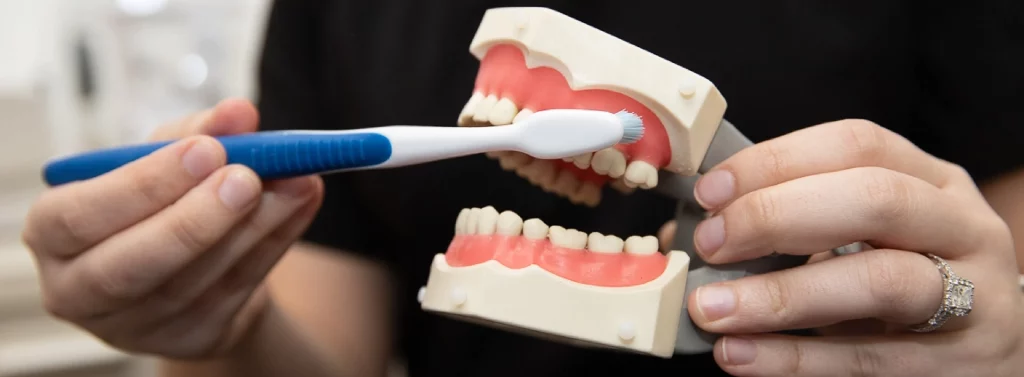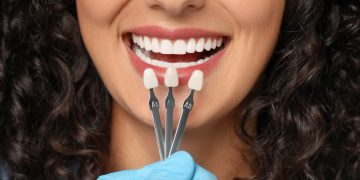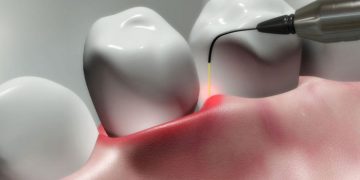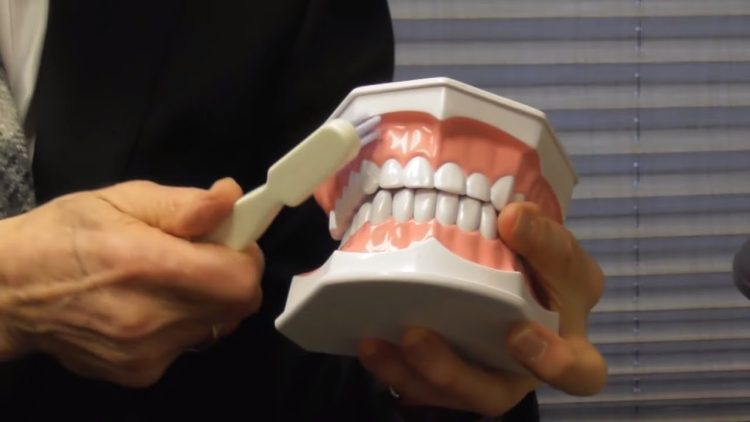Introduction
Oral health is an essential part of overall well-being, and one of the most significant aspects of maintaining oral hygiene is regular brushing. Most people are aware of the basics of brushing—using toothpaste, a toothbrush, and brushing at least twice a day—but how many of us truly understand its direct impact on the prevention of gum disease? Gum disease, also known as periodontal disease, is a common yet serious condition that can lead to tooth loss and other systemic health problems if left untreated. Early stages of gum disease, such as gingivitis, can be managed and reversed with proper dental care. However, once the disease progresses to periodontitis, the damage is often irreversible.
The key to preventing gum disease lies in simple yet consistent practices—namely, regular brushing. Brushing your teeth regularly is not just about maintaining a bright, white smile; it is about creating the foundation for healthy gums and teeth. In this article, we will explore the connection between poor brushing habits and the onset of gum disease, delve into the best brushing practices for gum health, and examine how toothpaste and mouthwash can support the prevention of gum disease.
Understanding the impact of brushing on gum health is the first step toward ensuring that your gums stay healthy for a lifetime. Let’s look deeper into how brushing can prevent gum disease before it even starts.
The Link Between Poor Brushing and Gum Disease
To understand how brushing affects gum disease prevention, it’s important to know how gum disease develops in the first place. Gum disease typically begins when plaque—a sticky, colorless film of bacteria—accumulates on the teeth and gums. Plaque forms naturally in the mouth, but when it is not removed through regular brushing, it hardens into tartar. The bacteria in plaque and tartar irritate the gums, causing them to become inflamed, red, and swollen, a condition known as gingivitis, the earliest stage of gum disease.
Without treatment, gingivitis can progress to periodontitis, a more severe form of gum disease. Periodontitis can cause gums to recede from the teeth, creating pockets where bacteria thrive, leading to further inflammation, loss of tissue, and in extreme cases, tooth loss.
One of the main causes of gum disease is poor oral hygiene, which includes inadequate brushing. If you fail to remove plaque regularly, it can cause gum irritation and inflammation, setting the stage for more severe gum disease. Research consistently shows that people who brush their teeth less frequently or less thoroughly are at a higher risk of developing gum disease, with the risk increasing the longer they neglect proper oral hygiene.
By brushing regularly and thoroughly, you can prevent plaque buildup, ensuring that bacteria are removed before they can cause damage. Thus, regular brushing acts as a primary line of defense against the onset of gum disease, keeping your gums healthy and free from infection.
Best Brushing Practices for Gum Health
Brushing your teeth correctly is essential for optimal gum health. While most people understand the importance of brushing, not everyone practices the most effective techniques. It’s easy to assume that brushing is just about moving the toothbrush across your teeth, but there’s a lot more to it. The following are the best brushing practices that can help prevent gum disease:
1. Brush Twice a Day
The American Dental Association (ADA) recommends brushing your teeth at least twice a day—once in the morning and once before bed. Brushing in the morning removes the plaque that has accumulated overnight, while brushing before bed removes the day’s plaque and food debris. By brushing twice daily, you reduce the chances of plaque building up and hardening into tartar.

2. Use the Right Toothbrush and Toothpaste
Choosing the right toothbrush is an essential part of brushing effectively. Soft-bristled toothbrushes are recommended for gum health because they are less abrasive and less likely to damage the enamel or irritate the gums. Hard bristles or vigorous brushing can cause gums to recede, which can lead to further issues.
Equally important is choosing the right toothpaste. Toothpastes containing fluoride are essential because fluoride helps to strengthen tooth enamel and prevent cavities. Some toothpastes also contain antibacterial agents that can help reduce plaque buildup. If you are specifically concerned about gum disease, consider using toothpaste formulated to combat gingivitis and reduce gum inflammation.
3. Brush for Two Minutes
It is recommended that you brush your teeth for at least two minutes each time. Many people brush too quickly, which means they may not be effectively removing plaque from all surfaces of their teeth and gums. Two minutes may seem long, but it’s necessary to thoroughly clean all areas of your mouth.
To make sure you’re brushing for the correct amount of time, consider using a timer, or you can opt for an electric toothbrush with a built-in timer.
4. Use Proper Brushing Technique
When brushing, it’s important to use the correct technique. Hold the toothbrush at a 45-degree angle to your gums. Use gentle, circular motions rather than scrubbing back and forth. This technique helps remove plaque from the gumline without irritating the gums or causing damage to the enamel. Be sure to brush all surfaces of each tooth—the outside, the inside, and the chewing surfaces.
Don’t forget to brush your tongue, as it can harbor bacteria that contribute to bad breath and plaque buildup. Also, gently brushing along the gumline is crucial for preventing plaque accumulation at the base of the teeth, where gum disease typically starts.
5. Change Your Toothbrush Regularly
Toothbrushes wear out over time, and the bristles lose their effectiveness. It’s important to replace your toothbrush every three to four months, or sooner if the bristles are frayed. Using an old, worn-out toothbrush will not effectively clean your teeth or gums, leaving you vulnerable to plaque buildup and the risk of gum disease.
The Role of Toothpaste and Mouthwash in Prevention
While brushing with the correct technique is crucial, toothpaste and mouthwash can further enhance your oral care routine and aid in the prevention of gum disease. Let’s examine the benefits of each:
1. Toothpaste for Gum Health
Toothpaste plays a vital role in brushing. It not only helps to remove food particles and plaque but also contains ingredients that can actively support gum health. The following are key components to look for in toothpaste that supports gum disease prevention:
- Fluoride: Fluoride helps strengthen tooth enamel, which is important for preventing cavities and protecting the tooth surface against plaque buildup.
- Antibacterial Agents: Toothpaste with antibacterial agents, such as triclosan or stannous fluoride, can help reduce the bacterial plaque that causes gum disease. These agents target the bacteria that irritate the gums, reducing inflammation and preventing gum disease.
- Desensitizing Agents: For those with sensitive gums, certain toothpastes contain desensitizing agents that can soothe gum tissues and reduce discomfort while brushing.
2. Mouthwash for Extra Protection
Mouthwash can be a helpful adjunct to brushing, offering additional protection against gum disease. Mouthwashes containing antiseptic or antibacterial agents can help reduce bacteria in the mouth, reaching areas that a toothbrush might miss. By rinsing with mouthwash, you can kill bacteria, freshen your breath, and provide an extra layer of protection for your gums. Additionally, mouthwash with fluoride can help to strengthen tooth enamel and prevent cavities.
When selecting a mouthwash, look for products that are specifically designed to target gum disease. Avoid alcohol-based mouthwashes, as they can dry out your mouth and potentially worsen gum problems. Instead, opt for mouthwashes with antimicrobial ingredients, such as chlorhexidine or essential oils, that fight plaque and gingivitis.
Conclusion
Brushing your teeth regularly is an essential step in preventing gum disease and maintaining long-term oral health. By brushing correctly twice a day with the right toothbrush and toothpaste, you can significantly reduce your risk of gum disease. Regular brushing helps prevent plaque buildup, which is the primary cause of gum disease, and ensures your gums stay healthy and free from inflammation. When combined with proper brushing techniques, mouthwash and toothpaste can further enhance your ability to maintain healthy gums.
The importance of brushing in preventing gum disease cannot be overstated. By establishing and sticking to an effective oral care routine, you are taking proactive steps toward preventing gum disease before it starts. Remember, consistent brushing is the foundation of good oral health, and the earlier you start practicing good habits, the better chance you have of keeping your gums healthy for life.













































Discussion about this post